One of the greatest names in Swiss watchmaking, Vacheron & Constantin is the archetype of the Prestige Swiss Watch Company. Vacheron & Constantin, along with Patek Philippe and Audemars Piguet, make up the classic Trinity of 20th century Swiss watch brands. With a customer list in their Golden Book that reads like a veritable World Who's Who of the past two and a half centuries, Vacheron and Constantin's pedigree and recognized brand cachet is without question. That they have maintained their position at the apex of the watchmaking firmament throughout their existence, across the years and spanning the generations, makes their reputation all the more impressive.
There have been bumps in the road, for sure. Many collectors and connoisseurs of fine timepieces feel that for the latter part of the 20th century, Vacheron and Constantin has lost its way, fallen from its exalted position of technical and aesthetic leadership it held for so long. Some have even whispered that the great company has been plundered from within, the temporary owners looting the store of horological riches in the archives and museum of the company, while ignoring the development and core philosophy the Brand has come to represent, leaving the Brand a hollow shell of its former self. Many of these claims are unsubstantiated rumour. Others stem from well meaning innocence. As Mr. Clemens once said, "The rumours of my demise are greatly exaggerated."
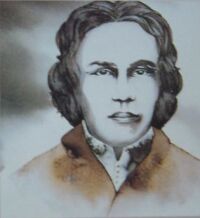

In the beginning...
To understand the glory that is Vacheron & Constantin, knowledge of their history and past achievements is necessary. Since their earliest days, the Vacheron name has been synonymous with fine watchmaking. The name has been well regarded by the cognoscenti and the industry insiders, always spoken with a degree of reverence and respect.
Set amidst the backdrop of the European Age of Enlightenment, Revolution, and the chaos of social and political upheaval, Vacheron & Constantin's story parallels that of the history of the modern Western World. It is an interesting and worthy history indeed.
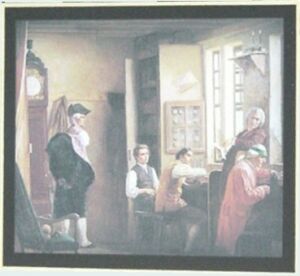
Watchmaker's Workshop in 18th Century Geneva
Christophe De Ziegler, Geneva Kunsthistorisches Museum
Vacheron and Constantin's origins can be honestly traced back to 1755, when the 24 year old Jean-Marc Vacheron joined the ranks of the Cabinotier of Geneva. Cultured, well read, and a respected member of the intelligentsia of the time, young Jean-Marc quickly established a reputation for producing timepieces of the highest grade. Vacheron's reputation extended to the Royal Courts of Europe, where their creations impressed even the Court Timekeeper and Royal Watchmakers.
One of the great seeming contradictions of Haute Horlogerie is the worship of hand craftsmanship, the mystique of the human touch, in an endeavour that is often better served by mechanized production. In an ironic way, this same paradox partially accounts for the renaissance of the mechanical watch in the last two decades of the 20th century. In an age of virtual reality and digital paradigms, the sensual image of human hands polishing and adjusting a complicated movement, hearing the soft tic-tic-tic of the escapement, precise and reliable beyond all other complex mechanical systems, is somehow soothing and lends some degree of comfort to humans that are, after all, inherently part of the analog, physical world.
 An all too seldom mentioned character in this fascinating story is that of Georges-Auguste Leschot. He joined Vacheron-Chossat in 1839.
An all too seldom mentioned character in this fascinating story is that of Georges-Auguste Leschot. He joined Vacheron-Chossat in 1839.
Georges-Auguste Leschot was one of the genius pioneers of the mechanization of serialized production, along with predecessor F. Japy in France (early 1800's), and contemporaries P.F. Ingold, Americans A.L. Dennison, the Pitkin brothers, E. Howard, and Custer. It is interesting to note that Ingold's attempts to mechanize production in the watchmaking industry were met with strong resistance in both France and England. Ingold himself was Swiss, and studied with Breguet in Paris, before attempting, unsuccessfully, to start machine assisted production lines in his own company.
Prior to Leschot's work at Vacheron, virtually all parts were rough cut, formed, and finished by hand. This lack of fine precision essentially forced the custom creation of every single piece, even if the design was fundamentally unchanged. There was no interchangeability of parts, even for the same model. Essentially, every finished piece was a one-off. This was a problem of production and execution, not of design.
Efforts had already started, a few decades before, to create machines that could produce, reliably and consistently, precision parts that could then be used in serial production. G-A. Leschot's breakthroughs were in designing machines that could produce parts that were of sufficient quality and precision that they were interchangeable in the same caliber. The production and cost efficiencies realized were such that Vacheron and Constantin quickly became a major supplier of components and ebauche to other watchmakers. They also remained a dominant manufacture due to the resulting cost efficiencies. That Leschot played a critical role in Vacheron and Constantin's survival and growth during those glory years cannot be over-emphasized. It can be reasonably argued that Leschot's machines was a key factor in the success of the Swiss bar movement design. No less a landmark work than Karl Marx' Das Kapital makes reference to Vacheron and Constantin for successfully introducing machine work into the watchmaking process. Suffice it to say that Leschot and Vacheron played pivotal roles in the industrialization of watchmaking, hitherto a cottage industry, and blazed the path for future watchmaking titans Omega and Longines.
During the latter part of the 19th century, Vacheron and Constantin underwent a number of name and individual ownership changes, but always with a Vacheron and a Constantin at the helm.
Vacheron & Constantin was a frequent participant in time trials and competitions, usually garnering top of class awards and prizes in these competitions. There is even the story of a consecutive series of 9 watches submitted to Kew Observatories in England, all of which won top honors. These awards and prizes further reinforced the image of VC as best in the world.
Vacheron Constantin Chronology
The preferred gift at the highest levels...
Since the company's earliest days, royalty and heads of state were avid customers, and even in their native Switzerland, Vacheron and Constantin were the preferred brand for important official gifts.
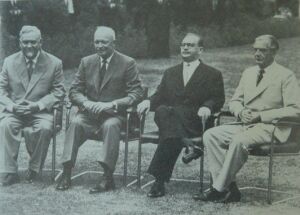 A few years after the end of World War II, in 1955, when Allied leaders met at the Palace of Nations in Geneva for peace talks, Nikolai Bulganin (Soviet Union), Anthony Eden (Great Britain), Dwight D. Eisenhower (USA), Edgar Faure (France) were each presented with a Vacheron & Constantin as a commemorative gift from 20 Genevans, inscribed with, "May this watch always show happy hours - for you yourself, your people, and the peace of this world."
A few years after the end of World War II, in 1955, when Allied leaders met at the Palace of Nations in Geneva for peace talks, Nikolai Bulganin (Soviet Union), Anthony Eden (Great Britain), Dwight D. Eisenhower (USA), Edgar Faure (France) were each presented with a Vacheron & Constantin as a commemorative gift from 20 Genevans, inscribed with, "May this watch always show happy hours - for you yourself, your people, and the peace of this world."
A model from Vacheron & Constantin was chosen as the official State gift by the Federal Swiss government in 1953 to be presented to Queen Elizabeth II upon her coronation.
 King Chulalongkorn of Thailand was a patron of the House, ordering several pieces to add to his collection in the early 1900's.
King Chulalongkorn of Thailand was a patron of the House, ordering several pieces to add to his collection in the early 1900's.
The connection to Thailand continues to this day, resulting in a particularly embarrassing incident that is symptomatic of the recent dark cloud plaguing the noble House. It seems that an early Mercator, a very unique design that was to symbolize the re-awakening of Vacheron & Constantin as a global watch industry leader, was presented to King Bhumibol of Thailand. The piece had to be returned - it did not work.
Iconic designs - interesting, signature and important pieces from Vacheron & Constantin
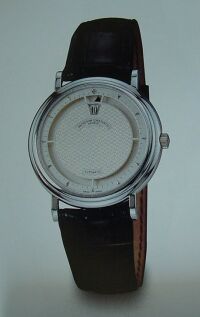
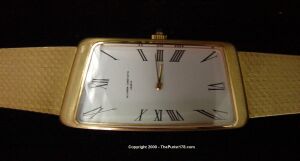

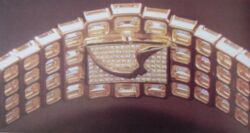

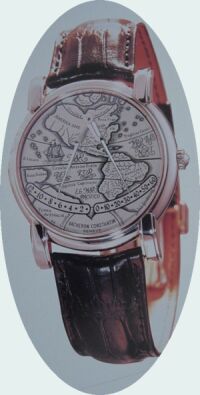

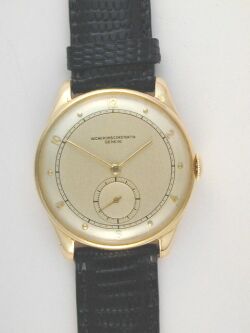

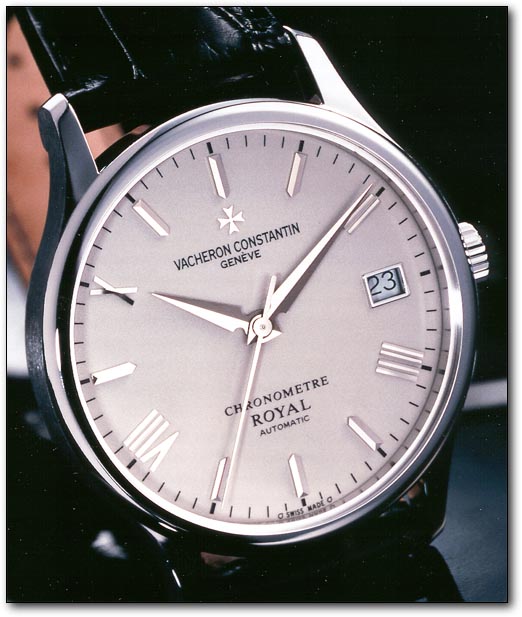
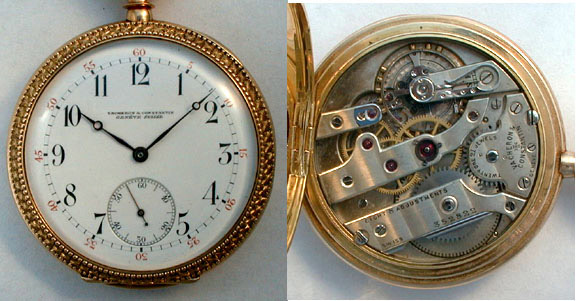
As of 1997, Vacheron-Constantin's offerings were organized along 5 main "collections"
Overseas - Sport Line
Les Historiques - re-editions and re-releases of historical models from VC own history
Les Joailleries/Absolues - high jewelry line
Les Essentielles - basic line, Classic
Les Complications - high horology line
Back to the Future
Rare is the company that can stay at the top of its chosen industry for even one generation of management. Even rarer is the brand that can remain the ne plus ultra, becoming the very essence of the best that this world can offer, across centuries and generations.
From being the greatest watchmaking company in the world, to becoming the "Greatest watch of my grandfather's generation," spoken with veneration, but in the past tense, Vacheron has now almost come full circle. Company management took their eyes off the market, and almost disappeared into obscurity. Lost for awhile, floating without direction or focus, many had written them off, seeing them relevant only for reasons of nostalgia.
There were the styling and positioning missteps as well. It was fairly argued that Vacheron was the only major house that did not have a distinctive icon line, like the Royal Oak from Audemars or the Nautilus and Golden Ellipse from Patek. When Audemars Piguet found such success and created the whole new category of luxury sports watch in stainless steel, Patek Philippe quickly countered with the Nautilus. Vacheron fumbled around for two decades, misfiring with the 222, and then the Phidias. Only now, over 20 years later, is Vacheron even somewhat competitive in the category, with their Overseas line.
And then, there is the apocryphal story of the malfunctioning Mercator to King Bhumibol.
These points hopefully are remnants of the disarray in the dark days of transition from Investcorp to Vendome.
Some traditionalists and purists have bemoaned the acquisition of the brand by Vendome Group, seeing it's absorption into a large luxury brands conglomerate as a homogenizing thing. They fear the profit priority will sterilize innovation and destroy any remaining unique brand distinction.
This concern may be misplaced, as the consolidation of the Swiss Watch Industry may be an unavoidable trend. If losing its independence was an inevitability, then at least it is in the company of other world class brands.
I am a management theorist and practitioner by education, training, and profession.
Bill Stonehill, a professional in the watch industry for several decades; Carlos Perez, a most eloquent and well read watch connoisseur and commentator held in the highest regard; and I had a discussion in the middle of 2000 about the role of management in a watchmaker's quality of product and design, brand positioning, reputation, and commercial success. We all agreed that management, as much as individual designers and cabinotiers, has a critical impact on a company.
With the acquisition by Vendome Luxury Group, whose brand jewels include Cartier, Baume & Mercier, Piaget, Panerai, Dunhill, and, in 2000, IWC, Jaeger-LeCoultre and A. Lange, Vacheron & Contantin now has the leadership and financial backing to survive and fight the good fight. The management of Vendome are experienced professional managers in the Luxury Goods Marketing, with a solid track record of success. Several executives, especially Mr. Franco Cologni, are distinguished and respected experts and timepiece cognoscenti.
Vacheron & Constantin is widely considered to be the Crown Jewel in Vendome's holdings. That Compagnie Financière Richemont AG decided to completely merge Vendome into the parent holding company and consolidate the management structure clearly indicates Richemont's commitment to the Luxury Brands group. Certainly, the developments that have taken place so far are promising - consolidation of the distribution channels, and the re-acquisition of international representation rights from independent agencies, with the intended end of improving sales and after-sales service and making consistent market positioning world wide. That Vacheron Constantin had the ability and commitment to recently purchase an independent movement house for captive design and production work says volumes about the intended ascendency of the Grand House.
In the case of Vacheron & Constantin, I am hopeful that the correct ownership is in place to provide the proper stewardship and hands on management to lead them back to their rightful place, at the very pinnacle of the high grade watch brand hierarchy.
Bibliography and Credits
Link to Bibliography and book list
Vacheron & Constantin archival documents, marketing materials, company brochures
Special thanks to
Mr. Stephen Sugiyama for the link to the 1999 Richemont press release, and other corrections
Mr. Wayne Schlitt for his reference to the Kew Observatory's trials
Photos:
Vacheron & Constantin marketing, archive photos
ThePurist178.com personal collection
various private collectors, as noted
Addendum - on the matter of the claimed age and history of Swiss Watch companies, it is a commonly known secret that ... most flagrant of which is Blancpain and their use of 1735 as a founding date.
Even as venerable a House as Vacheron has some historical ambiguity. VC themselves, in 1945, issued an ad that celebrated their "160th Anniversary" which would place their founding, by their own reckoning, to 1785, the time of Abraham Vacheron. Only later did they trace their lineage back even further, to 1755, to Jean-Marc Vacheron's company, which then subsequently became the official date of the company's founding. This occurred and was legitimized by the discovery of the Jean-Marc Vacheron commercial contract dated 1755.
The company's own archives contain nothing about its first 60 years since 1755, starting as they do in 1810 with letters signed by Jaques-Barthelemy Vacheron. In fact, most of the information about the company from Jean-Marc Vacheron's founding in 1755 to 1810 are derived from referent secondary sources, including documents and references from the public record.
This confusion surrounding the lineage and continuity of the company is in fact an anachronistic artifact of the modern concept and practice of the registered company surviving and becoming "greater than" the founder. In the mid-18th century, the company WAS the founder and master-craftsman, and vice-versa.
So, even according to the company itself, argument can be made to trace the origins of the company to 1755, 1785, or 1908, when, in terms of actual company registration, there is direct and unbroken lineage to this day, despite changes in ownership.
Addendum 2 - there is a lot of confusion about the relationship between VC, JLC, AP, and PP. This was further complicated by, at various times, cross shareholding relationships between VC, JLC, and JLC, AP. However, AP's 40% shareholding of JLC did not occur until the late 1980's, while the majority shareholding of VC by JLC was in the 1940's through 1965, the main link between the two companies besides equity being Mr. George Ketterer.
There is also the matter of overlapping claims to World Firsts - thinnest manual movement, claimed by both AP and VC in 1944-46, and again in 1955; and the thinnest automatic time only, again by both AP and VC in 1967.
Given the developments and priorities of both companies during the periods in question, I would suspect that the actual movement designer and ebauche manufacturer was most likely JLC, or an a priori joint development or cross license project. What exact role JLC played in the design or manufacture of one or the other movement is unclear, but given their pre-eminence as an engineering and production house, as well as ongoing working relationships with both AP and VC, I would suspect that JLC's role was significant.
Please Email me or Sign My Guestbook.
Watches Index | ThePurist178.com HomePage | Vacheron Constantin discussion forum
Copyright September 2000 - ThePurist178.com - all rights reserved
This article was prepared from publicly available sources, without the express permission or approval of Vacheron & Constantin. It is written for non-commercial reference and entertainment purposes only, and no claims are made for historical accuracy, although considerable efforts have been made to ensure factual correctness. All trademarks and copyrights remain the possession of their respective registered owners.